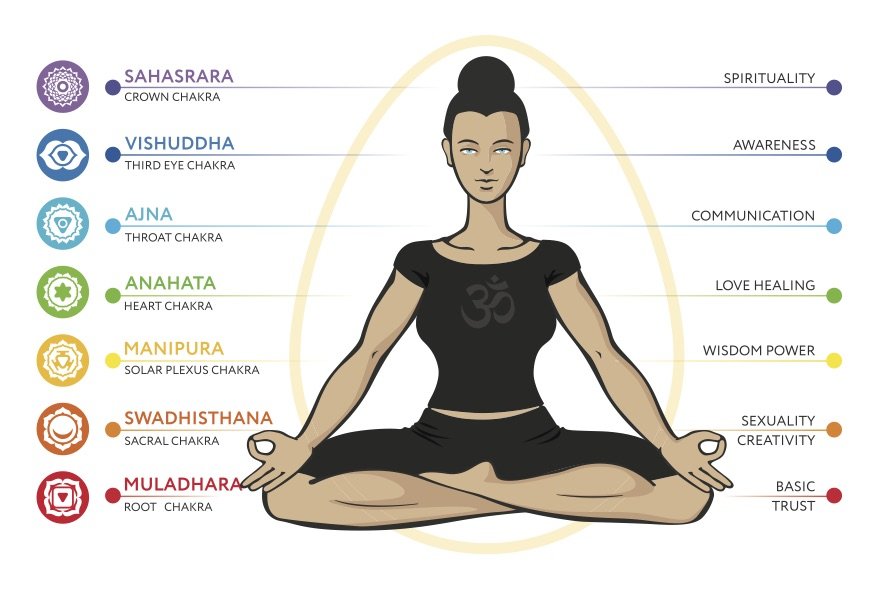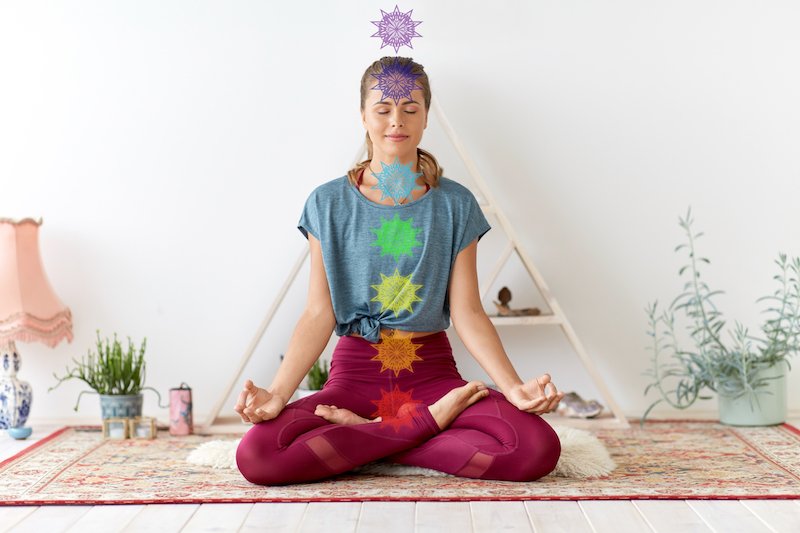How exactly is Kundalini meditation more than religion or mere set of beliefs? Sonia Vadlamani explains how this energizing technique can offer a greater sense of awareness and purpose.
At some point in our lives, many of us realize how we spend most of our days in a ‘default-mode’, as we keep reacting to the stimuli in the environment around us with minimal sense of control over the various events of the day.
For instance, you may have noticed how often you fix your lunch absentmindedly or go about your work in an automated fashion – all without paying any real attention – yet feel drained by the end of the day.
Meditation can prove to be an effective key to enhance our awareness. And Kundalini meditation could be a more intentional way to unleash one’s inner potential and improve focus. Indeed, practitioners of Kundalini meditation believe that every human being has life-energy or prana present within, which can be awakened with patience and dedicated practice.
RELATED: 9 Science-Backed Benefits of Meditation
What is Kundalini meditation?
While the exact origin of Kundalini meditation is not known, its practice has been traced back to as early as 500 BC. Hinduism believes Kundalini to be a vast pool of energy visualized in the form of a coiled or sleeping serpent, resting at the base of the spine which is also the root chakra or muladhara. 
The seven chakras, including muladhara shutterstock/Olga Zelenkova
Kundalini meditation was introduced to the Western world by Yogi Bhajan in 1968, who envisioned a new form of spirituality that connected ancient knowledge with the modern-era lifestyle.
Purpose of Kundalini meditation
The core philosophy underlying Kundalini meditation is to facilitate movement of energy through the body. The ‘coiled’ or static energy reserve generally refers to the unrealized potential that is inherently present in every human being.
RELATED: Tummo Breathing and Meditation: a Guide
A fundamental part of Kundalini yoga, Kundalini meditation is aimed at harnessing this large reserve of unutilized energy at the base of the spine. It works by enabling energy movement through the seven chakras – starting from the base chakra at the bottom of the spine – through the different parts of body – to the crown chakra situated atop the head, from where it eventually exits the body.
“Kundalini meditation could be a more intentional way to unleash one’s inner potential and improve focus.”
This movement of the life-energy symbolizes awakening of Kundalini, resulting in an expanded state of consciousness and improved mind-body-soul balance. Kundalini meditation also lowers stress levels and enables one to act in a focused and purposeful manner, rather than leading their lives in automation mode.
Benefits of Kundalini meditation
The research on Kundalini meditation is still in premature stages, but researchers and psychologists have begun to acknowledge its potential benefits when practiced regularly alongside the other integral elements of kundalini yoga. Some of the science-backed benefits of kundalini meditation include:
-
Lowered stress levels
Kundalini yoga can reduce production of cortisol levels upon consistent practice, as shown in a 2017 study by Jocelyn N García-Sesnich, et al. Thirteen participants who practiced kundalini meditation along with other components of Kundalini yoga regularly for a period of three months exhibited a significant reduction in stress and anxiety levels.
-
Improved sense of well-being
A study conducted by Suresh Arumugam showed positive impact on psychological sense of well-being and improved memory power, encouraging a more holistic approach towards health in the participants.
-
Reduced anxiety levels
An eight-week study trial by M. G. Gabriel et al showed lowered anxiety levels and significant reduction in depression symptoms with regular practice of kundalini yoga, offering promising results for treating conditions like Generalized Anxiety Disorder (GAD).
-
Improved cognitive and emotional functioning
Researchers Harris A. Eyre et al attempted to study the effect of a 12-week kundalini yoga intervention on mild cognitive impairment with declining age. The subjects exhibited improved memory levels, along with a significant decline in apathy levels and depressive symptoms.
How to practise Kundalini meditation
Practitioners of Kundalini meditation agree that the best results are achieved by starting small and proceeding gradually at a sustained pace, even if all you can dedicate to it is a few minutes daily. Here's how to get started:
1. Get comfortable
Choose a quiet place where you're less likely to be distracted or disturbed. For best results, it's ideal to meditate at the same spot every day. Wearing neutral-toned, comfortable and loose-fitting cotton clothing is recommended.
2. Decide on a convenient time
While there are no hard and fast rules about when to meditate, it would be best to practice it at the same time each day consistently, without disruption. Morning meditations work great for setting good intentions for the day ahead, while evening meditation is good for unwinding. Meditation right after a meal is not advised, as your body needs all the energy at this time for digestion.
3. Choose a meditation span
Again, there's no set ideal duration here, it's up to you to decide. Anywhere between five minutes to an hour of practice. Starting smaller and gradually increasing the duration will help you to focus better, while fitting the practice into your schedule with ease.
4. Get into a comfortable position
You could sit in lotus pose or a cross-legged position on a rug or on the floor, or in a straight-backed chair with your feet flat on the floor. It's important to keep your spine in upright position through the duration of meditation. Close your eyes gently and press your palms together over your heart in prayer pose.

In the Lotus position shutterstock/Syda Productions
5. Introduce a mantra
Chanting a mantra can help you direct your energy and focus better while you meditate. A commonly chosen bija or seed mantra for this meditation is “Sat Nam” which translates to “I am the truth”. Chant “Sat” as you inhale and “Nam” as you exhale. This or any other mantra you personally prefer can be chanted out loud or silently in your head.
6. Focus on your breath movement
Energize your breaths as you chant the chosen mantra. Start with a slow and prolonged inhale till your lungs feel full, then slowly exhale till your lungs feel completely empty. Ideally, the inhales and exhales should be broken into four parts with brief pauses.
“The core philosophy underlying Kundalini meditation is to facilitate movement of energy through the body.”
Repeat the cycle. Observe as your breath moves through your body. If your mind begins to wander, bring your attention back to the breathing pattern and the chants.
7. Draw meditation to a finish
Set an alarm for a predetermined duration of meditation, and continue the breathing and chanting cycle till the alarm rings. Finish with a deep inhale as you raise your arms above, and relax as you exhale.
8. Increase the frequency gradually
As you gradually increase the duration of meditation and practice more consistently, notice the energy rising from the base of the spine, coursing up along the length of your spine and outside via the top of your head.
The takeaway: Kundalini meditation
Realizing your fullest potential with Kundalini meditation could prove to be a rewarding journey. Regular practise can enable you to act from a place of purpose and intent, as opposed to reacting to your thoughts and external stimuli. It can also prompt a state of mindfulness by breaking unhelpful automated patterns in your life, thus clearing path for creative pursuits and more joyful existence.
Main image: shutterstock/Dymtro Flisak
happiness.com | The fine art of being: learn, practise, share
Are you a happiness.com member yet? Sign up for free now to enjoy these benefits:
■ our happiness magazine with practical life tips and inspiration
■ share knowledge and help support others in our happiness forum
Written by Sonia Vadlamani
 Fitness and healthy food blogger, food photographer and stylist, travel-addict. Sonia loves to write and has resolved to dedicate her life to revealing how easy and important it is to be happier, stronger and fitter each day. Follow her daily pursuits at FitFoodieDiary or on Instagram.
Fitness and healthy food blogger, food photographer and stylist, travel-addict. Sonia loves to write and has resolved to dedicate her life to revealing how easy and important it is to be happier, stronger and fitter each day. Follow her daily pursuits at FitFoodieDiary or on Instagram.




Join the conversation
You are posting as a guest. If you have an account, sign in now to post with your account.